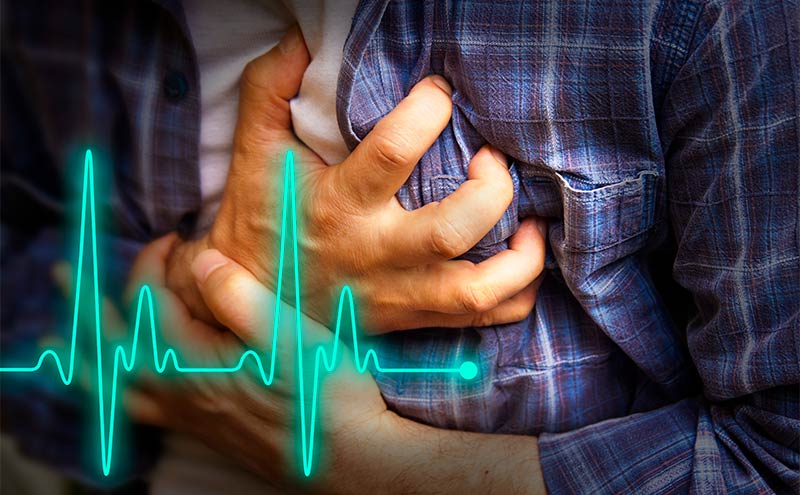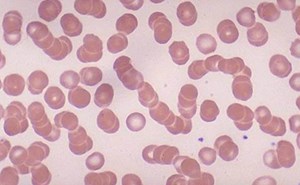
Out of Hospital Cardiac Arrest and Bystander CPR during the Covid-19 Pandemic: An Early Review


As of February 7, 2021, over 26 million cases of COVID-19 and more than 460,000 associated deaths have been reported in the United States. Prior to the COVID-19 pandemic, the initiation of cardiopulmonary resuscitation (CPR) by lay bystanders before the arrival of emergency medical services (EMS) significantly improved survival following out of hospital cardiac arrest (OHCA).1,2 However, given the potential risk for viral transmission and the possibility of increased OHCA mortality under pandemic conditions, both the risks and benefits of bystander CPR may have changed since the COVID-19 outbreak. This article will review the epidemiology of OHCA, the prevalence of COVID-19 in OHCA, and current recommendations for bystander CPR in the COVID-19 pandemic era.
The exact pathogenesis of COVID-19 disease is still an area of ongoing investigation, but likely mechanisms by which it may lead to cardiac arrest include acute hypoxemic respiratory failure, hypercoagulable state leading to venous or arterial thromboemboli, adverse effects of treatment (eg, QTc prolonging medications), viral myocarditis, and predisposal to arrhythmias.3,4 Beyond the direct effects of the virus and complications of treatment, the pandemic period has been marked by concern that some patients could delay seeking medical attention for other common and potentially life-threatening conditions (eg, myocardial infarction and stroke) due to concerns about COVID-19 exposure and strained healthcare resources.5 Between the direct burden of COVID-19 disease and delays to care under pandemic conditions, it is concerning that more patients may present initially with OHCA. In the setting of the pandemic, there is also concern that interventions by lay bystanders could be diminished due to worries surrounding viral transmission, while overwhelmed EMS could have delayed response times, resulting in lower rates of return of spontaneous circulation (ROSC) and survival.
To date, multiple studies have shown a higher incidence of OHCA during the early pandemic than in pre-pandemic comparison periods, although not to the same degree across all regions. One of the earliest studies, which utilized a regional cardiac arrest registry in the Lombardy region of Northern Italy, showed a 52% increase (32 vs 21/100,000 population; p <0.001) in the incidence of OHCA from February 21 to April 20, 2020, compared with the same period in 2019.6 A second study, which compared fire brigade data collected in Paris, France from March 16 to April 26, 2020 with the same six-week period in 2019, showed a 32% increase in OHCA,7 while a review of EMS data from New York City from March 1 to April 25, 2020 demonstrated a 199% increase in OHCA (46 vs 16/100,000 population) as compared with the year prior.8 A subsequent review of a large cardiac arrest registry in the United States demonstrated an overall higher incidence of OHCA from March 16 to April 30 in 2020 than during the same period in 2019 (88.5 vs 69.7 per million population).9 In this study, the burden of excess OHCA was highest in counties with the highest burden of COVID-19-related mortality.
The authors of the Italian study noted a strong correlation between OHCA and cumulative incidence of COVID-19, with diagnosed or suspected cases accounting for 25.5% of all OHCA in 2020, and 74% of the increase over 2019. The Paris study estimated that patients with confirmed or suspected COVID-19 infection accounted for approximately one third of excess OHCA during the pandemic period, although testing was not performed in all cases. The authors of the New York Study observed a temporally associated increase between the incidence of EMS calls for symptoms consistent with COVID-19 (eg, fever, cough, dyspnea) and the number of excess responses for OHCA but did not directly estimate the proportion of excess OHCA attributable to COVID-19 infection. The US registry study also did not directly estimate COVID-19 attributable OHCA but did note that an increase in OHCA cases with an etiology of “other,” which included cases attributable to COVID-19.
In addition to increased incidence of OHCA during the pandemic, patients experiencing OHCA during the pandemic had significantly lower rates of ROSC and survival than in the pre-pandemic control periods. In the cardiac arrest registry review from the United States, the rate of ROSC was 23% during the pandemic vs. 30% in 2019. However, when adjusting for community COVID-19 mortality rate, it was noted that the rate of ROSC was substantially worse in communities with higher mortality rates, ranging from 11% lower during the pandemic (RR, 0.89; 95% CI, 0.81-0.98) in communities with 0-25 deaths/million population, up to 33% lower (RR, 0.67; 95% CI, 0.56-0.80) in communities with >500 deaths/million population. This trend was supported by the New York, Paris, and Italian studies conducted in areas with high COVID-19 mortality. In New York, the rate of ROSC during the pandemic was 18% vs. 35% the year prior (p<0.1), while in Italy the rate during the pandemic was 9% vs. 20% pre-pandemic (p <0.001). In Paris, the proportion of patients who survived to hospital admission following OHCA decreased during the pandemic from 23% to 13% (p<0.001). The proportion of patients presenting with an initial shockable cardiac rhythm was significantly lower during the pandemic in all four studies.
During the pandemic period, both European studies showed an increased likelihood of OHCA occurring at home (Italy: 90% vs 83%, p=0.005; Paris: 90% vs 77%, p<0.001), a higher likelihood of an unwitnessed cardiac arrest (Italy: 53% vs. 46%, p=0.037; Paris: 41% vs 35%, p=0.003), and an increased EMS response time (Italy: 15 vs 12 minutes, p<0.001); Paris: 10 vs 9 minutes, p<0.001). Additionally, both studies found a lower likelihood of patients receiving bystander CPR (Italy: 35% vs 45%, p=0.02; Paris: 48% vs 64%, p<0.001) compared with the pre-pandemic period. Review of the large US registry showed increased OHCA in the home setting in 2020 (75%) vs. 2019 (70%), but no difference in witnessed events, bystander CPR, or EMS response time. The New York study found no significant difference in the rate of bystander CPR, unwitnessed events, or EMS response time, and it did not assess by location of the event.
To date, there is no large-scale study of the incidence of COVID-19 infections acquired during CPR. However, based on data showing <10% COVID-19 prevalence amongst patients with OHCA in Seattle in the early pandemic, the authors of one study predicted the risk of bystander mortality via acquired infection to be approximately 1/10,000, assuming a 10% risk of infection during CPR, and a 1% COVID-19 mortality rate. By contrast, they cite a prior estimate that bystander CPR during OHCA leads to an additional 300 lives saved per 10,000 patients.10
The American Heart Association guidelines acknowledge the potential risks posed by bystander CPR in the COVID-19 era, and the low likelihood of access to adequate PPE. However, given the strong prior evidence that early CPR and defibrillation reduce mortality, they support the initiation of at least compression-only CPR and utilization of an AED, if available. Additionally, the guidelines note that the majority of OHCA occurs in the home setting (which may be even more likely under pandemic conditions, as noted in several studies), and bystanders in these scenarios are most likely to be family members who have likely already been exposed. Recommendations also include use of a cloth mask by rescuers and covering the patient’s face with a cloth to minimize the risk of aerosolized secretions during chest compressions.11
Since the outbreak of the COVID-19 pandemic, the incidence of OHCA has increased, particularly in severely affected areas, with a decreased proportion of shockable rhythms, less ROSC, and lower survival. Direct effects of the virus account of some but not all of the increase. This is consistent with other recently published literature, which indicates decreased rates of ROSC and survival following in-hospital cardiac arrest (IHCA), with hospitals in severely affected regions experiencing greater declines than institutions in areas with lower COVID-19 burden.12 Although not definitive, the authors speculate that overburdened health systems may lead to delayed recognition and intervention for unstable patients, leading to poorer outcomes. In the case of OHCA, there is evidence of reduced rates of bystander CPR and increased EMS response time, although it not consistent across all regions. Furthermore, although no study to date has empirically demonstrated the risk of COVID-19 infection or mortality related to bystander CPR, the risk is most likely low, and professional guidelines continue to endorse at least hands-only CPR and defibrillation.
References
- Kragholm K, Wissenberg M, Mortensen RN, et al. Bystander efforts and 1-year outcomes in out-of-hospital cardiac arrest. N Engl J Med. 2017 May 4;376(18):1737-47.
- Riva G, Ringh M, Jonsson M, et al. Survival in out-of-hospital cardiac arrest after standard cardiopulmonary resuscitation or chest compressions only before arrival of emergency medical services: nationwide study during three guideline periods. Circulation. 2019;139(23):2600-2609.
- Nishiga M, Wang DW, Han Y, et al. COVID-19 and cardiovascular disease: from basic mechanisms to clinical perspectives. Nat Rev Cardiol. 2020 Sep;17(9):543-58.
- Augoustides JG. Cardiopulmonary resuscitation during the coronavirus crisis: important updates for the cardiothoracic and vascular anesthesia community. J Cardiothor Vasc Anesth. 2020;34(9):2312-14.
- Lange SJ, Ritchey MD, Goodman AB, et al. Potential indirect effects of the COVID-19 pandemic on use of emergency departments for acute life-threatening conditions - United States, January–May 2020. MMWR Morb Mortal Wkly Rep. 2020 Jun 26;69(25):795-800.
- Baldi E, Sechi GM, Mare C, et al. COVID-19 kills at home: the close relationship between the epidemic and the increase of out-of-hospital cardiac arrests. Eur Heart J. 2020 Jun 1;41(32):3045-54.
- Marijon E, Karam N, Jost D, et al. Out-of-hospital cardiac arrest during the COVID-19 pandemic in Paris, France: a population-based, observational study. Lancet Public Health. 2020 Aug;5(8):e437-43.
- Lai PH, Lancet EA, Weiden MD, et al. Characteristics associated with out-of-hospital cardiac arrests and resuscitations during the novel coronavirus disease 2019 pandemic in New York City. JAMA Cardiol. Published online 2020.
- Chan PS, Girotra S, Tang Y, et al. Outcomes for out-of-hospital cardiac arrest in the United States during the coronavirus disease 2019 pandemic. JAMA Cardiol. 2021 Mar 1;6(3):296-303.
- Sayre MR, Barnard LM, Counts CR, et al. Prevalence of COVID-19 in out-of-hospital cardiac arrest: implications for bystander cardiopulmonary resuscitation. 2020 Aug 4;142(5):507-509.
- Edelson DP, Sasson C, Chan PS, et al. Interim guidance for basic and advanced life support in adults, children, and neonates with suspected or confirmed COVID-19: from the Emergency Cardiovascular Care Committee and Get with The Guidelines-Resuscitation Adult and Pediatric Task Forces of the American Heart Association. Circulation. 2020 Jun 23;141(25):e933-43.
- Mitchell OJL, Yuriditsky E, Johnson NJ, et al. In-hospital cardiac arrest in patients with coronavirus 2019. 2021 Mar;160:72-78.
Don Haering
University of Washington, Seattle, WA
Nick Johnson, MD, FACEP, FCCM
University of Washington, Seattle, WA



